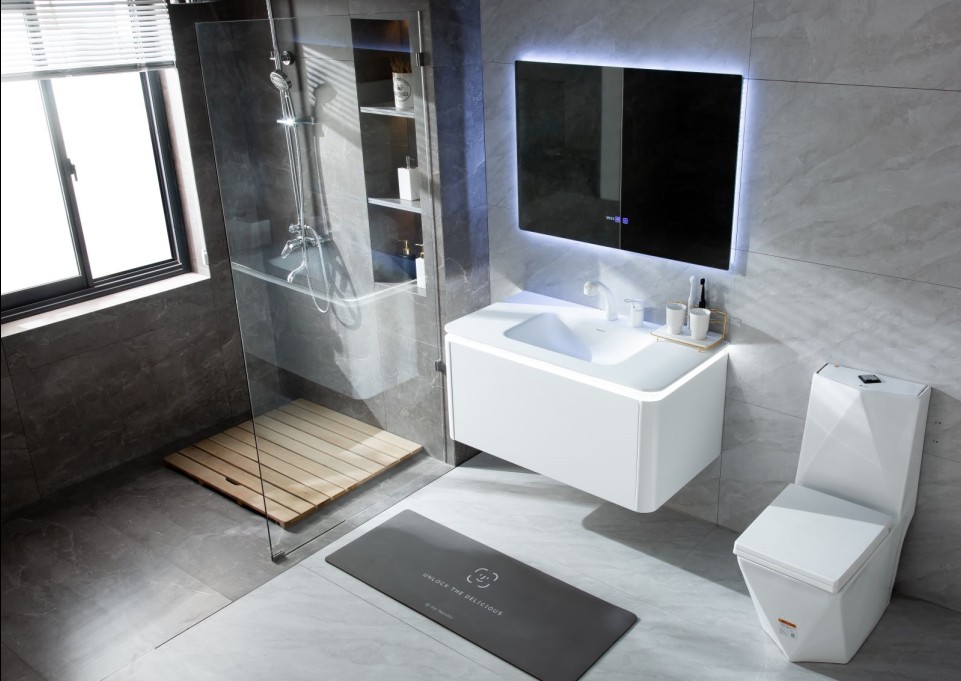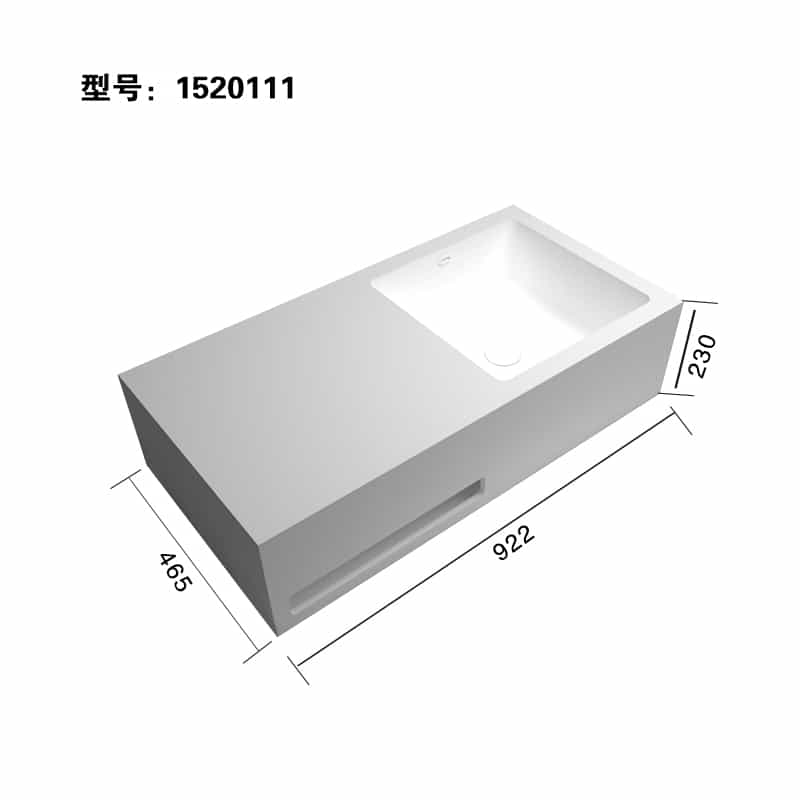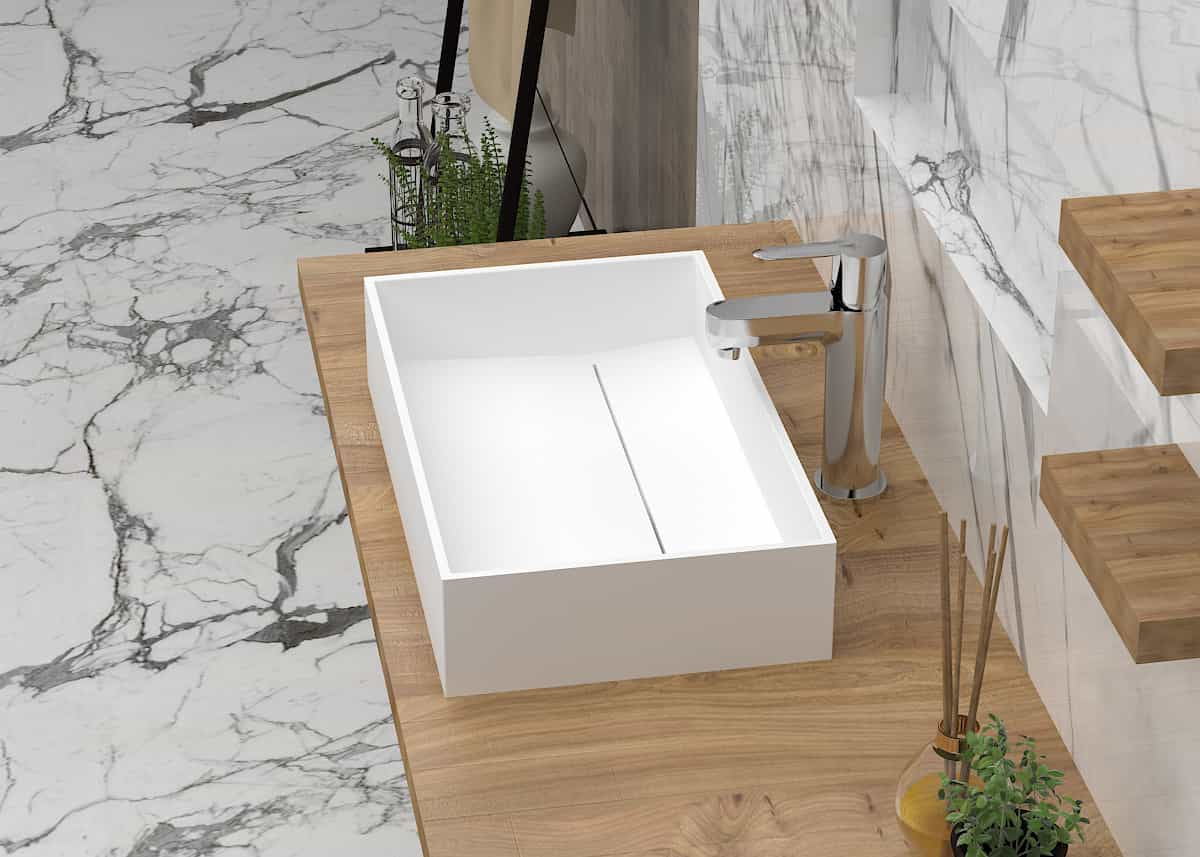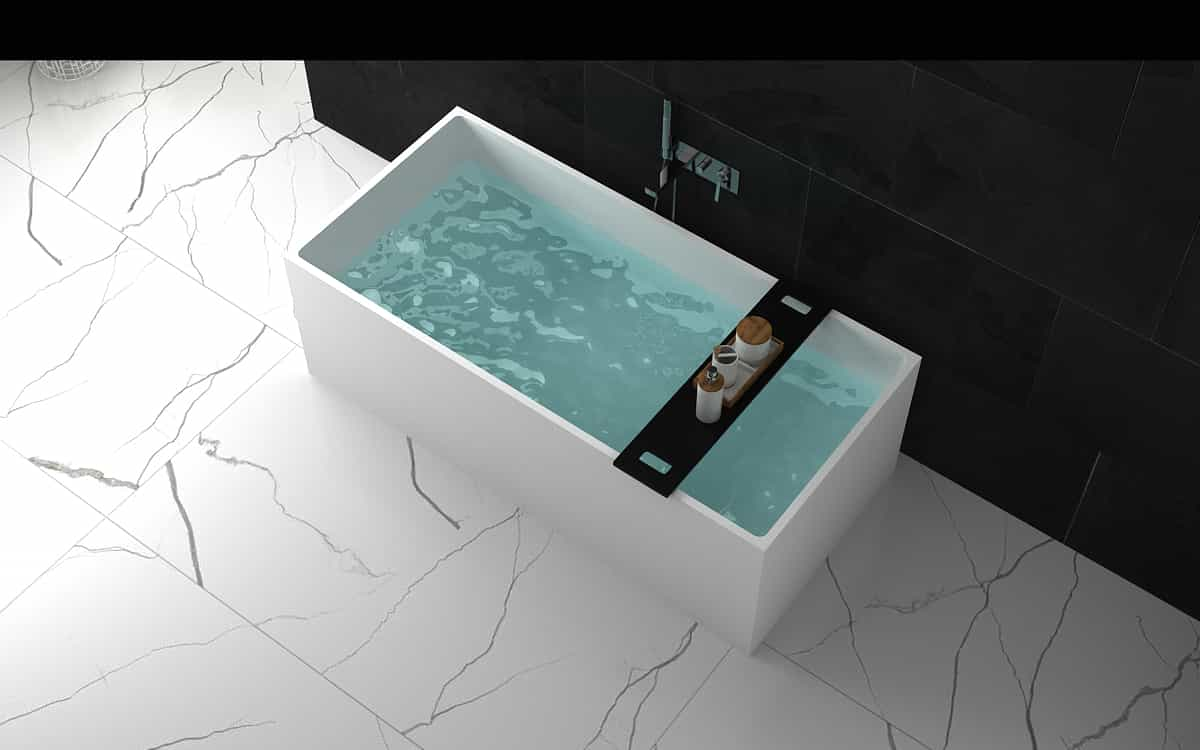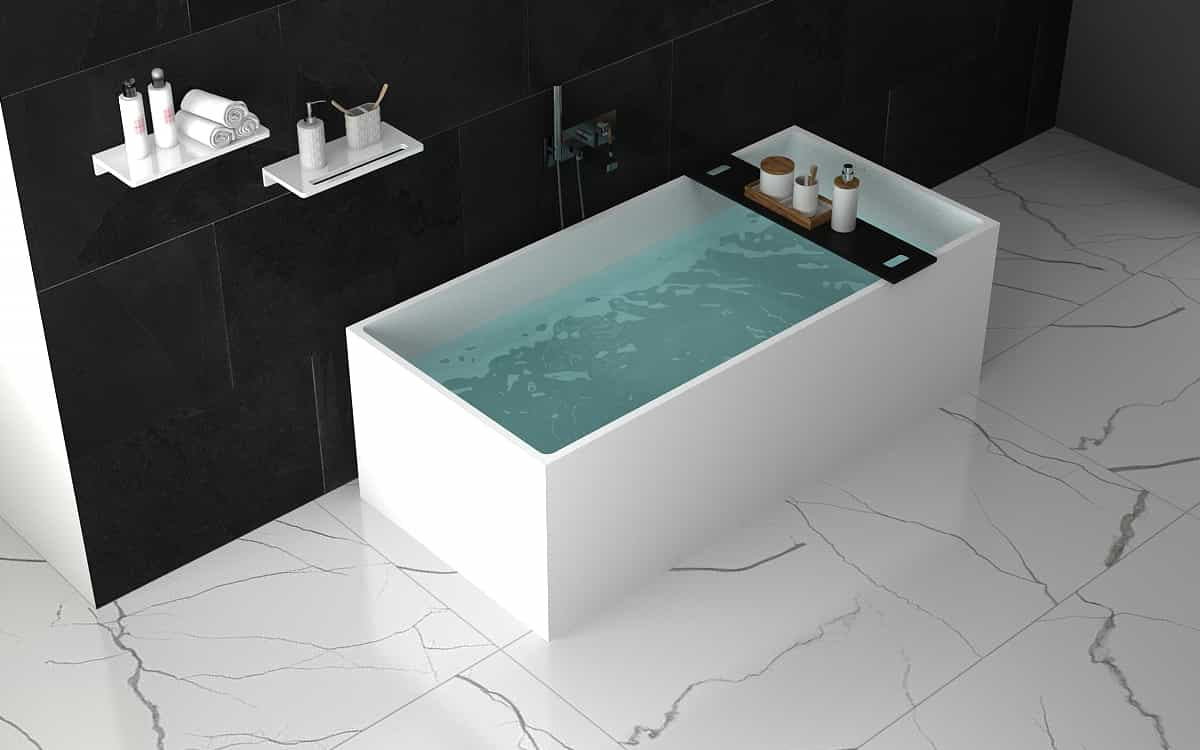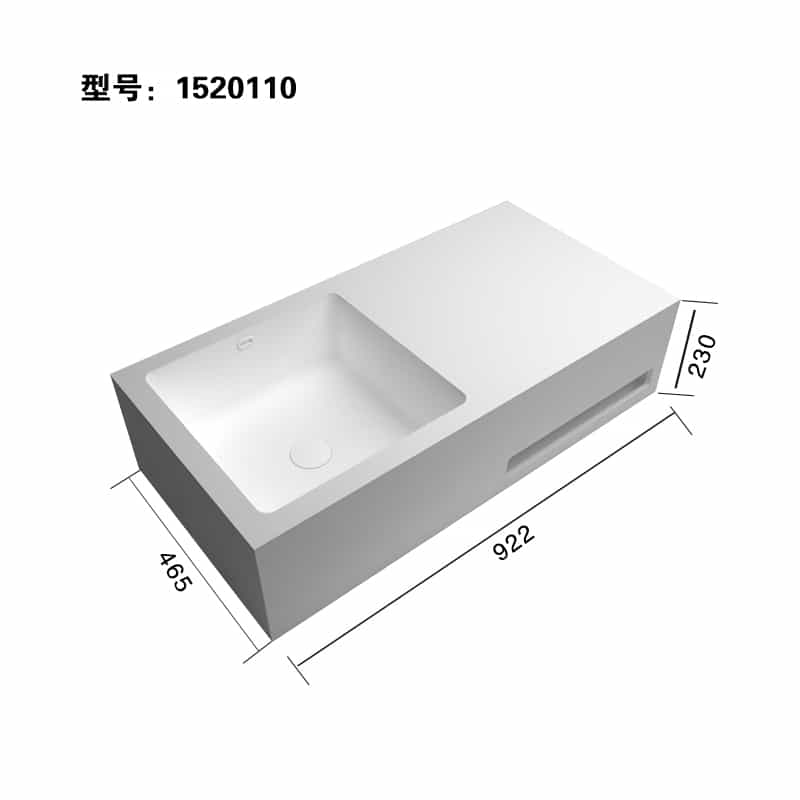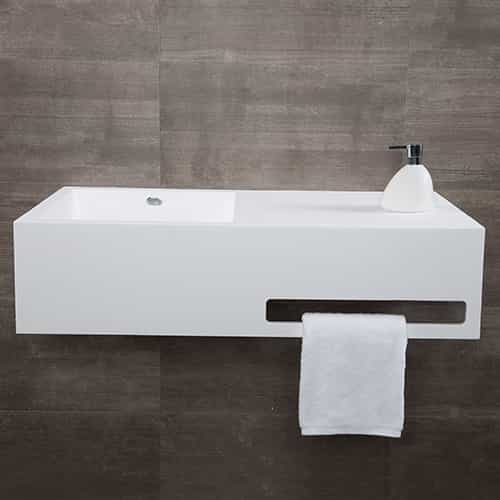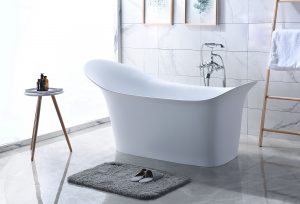
The bathtub is a bathroom facility that attracts people’s attention. After a day of work, it is the choice of many office workers to take a bath and relax at home. There are many types of bathtubs:
Bathtubs by Style
It is divided into non-skirted cylinder and skirted cylinder, and the styles are heart-shaped, round, oval, rectangular, triangular, etc.
Bathtub divided by function
Divided into ordinary bathtubs, massage bathtubs, etc., massage bathtubs include sitting bubble massage bathtubs, hydromassage bathtubs, hydrotherapy air massage bathtubs, pulse massage bathtubs, etc.
Bathtubs are classified by materials
Divided into cast iron bathtubs, acrylic bathtubs, steel bathtubs, wooden bathtubs, etc.
There are many choices of bathtub materials. Today, the editor will analyze the advantages and disadvantages of bathtubs made of various materials.
1. Acrylic bathtub
Advantages: The official name of the acrylic bathtub is glass fiber reinforced plastic bathtub. The surface material is methyl propyl methyl ester, the back is covered with glass fiber, and coated with special resin for reinforcement. The color of the acrylic bathtub is uniform, the surface is smooth, and there is no delamination and air bubbles. The heat transfer of the acrylic bathtub is very slow, so the heat preservation effect is good. Even in the cold winter, the skin will not feel “cold” when it touches the surface of the acrylic bathtub. When the human body collides with the acrylic bathtub, it generally does not hurt the body, so it is a necessary material for making luxurious bathtubs. Acrylic is a by-product extracted from deep-sea oil. Compared with cast iron and steel bathtubs, the cost of raw materials for making bathtubs is much lower, and the performance is very good, so it has price advantages and stronger market competitiveness. Acrylic has the characteristics of flexibility, it is very suitable for modeling, and the curvature of the corners can be realized through technology.
Disadvantages: Acrylic bathtubs have many advantages, but there are also disadvantages. The pressure resistance of acrylic bathtubs is relatively poor, so the surface is easily stained by some small hard objects, and it is also easy to yellow and age after a long time of use. In terms of service life, acrylic bathtubs are far inferior to cast iron or steel bathtubs. The heat dissipation capacity is relatively poor. This material is most afraid of being scratched by sharp objects, but this kind of scratch is also easy to repair, just wipe it with ordinary white toothpaste.
2. Cast iron bathtub
This kind of bathtub is made of cast iron, and its surface is covered with enamel, so it is relatively heavy and should not produce noise when used. Because the casting process is relatively complicated, cast iron bathtubs generally have a single shape, but the price is very expensive.
Advantages: durable, low water injection noise, easy to clean; Disadvantages: high price, heavy weight, difficult to install and transport.
3. Wooden bathtub
Advantages: 1. Health care, cedar wood has antibacterial effect. And it can help Chinese medicine to exert its medicinal effect. We can go to some medicinal bath places to see that they all use wooden barrels, which have health care effects, just like Chinese medicine must be boiled with porcelain jars to receive the desired effect; 2. Wooden The barrel is free of static electricity. Antiseptic and has a natural fragrance. 3. Good heat preservation performance. According to the test, at room temperature, the temperature only drops by 3-5 degrees per hour, and there is usually no problem with soaking for 2 hours. It is the best insulation among several types of bathtubs.
Disadvantages: The price is high, and maintenance, water leakage, deformation, etc. are usually required.
Four, steel bathtub
Advantages: easy to shape, cheap. Because the surface is enamel, it is not easy to get dirty, easy to clean, not easy to fade, and has a long-lasting luster. The noise reduction performance is slightly stronger than that of acrylic bathtubs, but it is not ideal.
Disadvantages: Insufficient firmness, loud noise, easy to peel off the porcelain surface.
5. Artificial stone bathtub
Advantages: smooth lines, simple shape.
Disadvantages: The bathtub made of artificial stone is easy to deform, the surface is not resistant to dirt, it is easy to change color and turn yellow, bulky, and the price is high.
The above is a summary of the advantages and disadvantages of five bathtubs made of common materials. Which bathtub is better? They each have their own advantages and disadvantages, the most important thing is that they are suitable for you.







